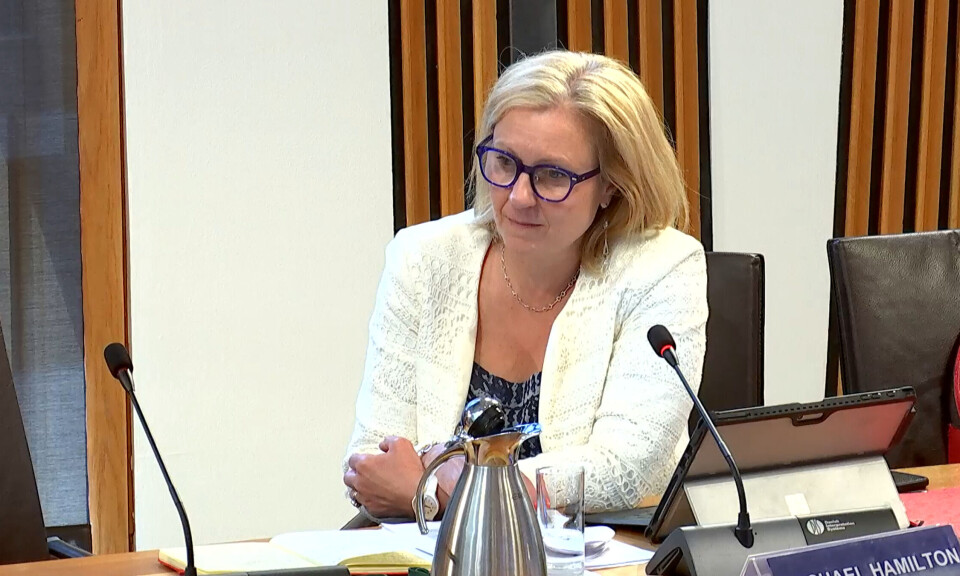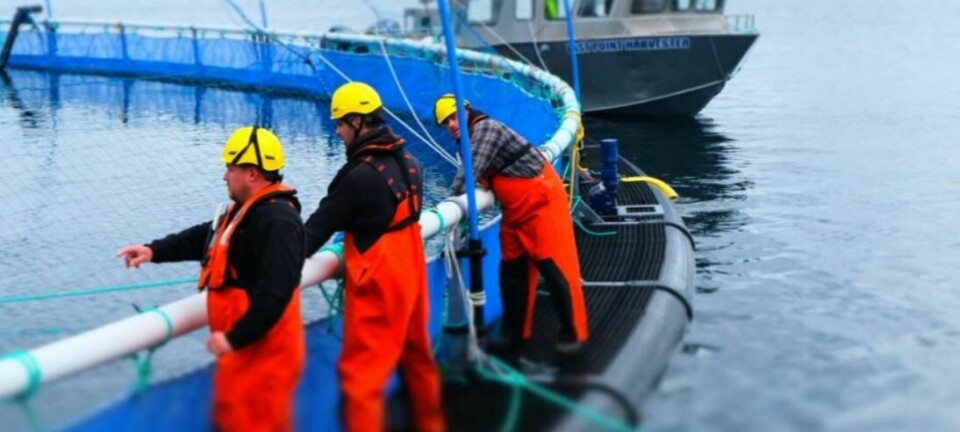
Fish health chief hails significant improvement in lice management
MSPs told of huge investment by salmon farmers in next-generation methods
The treatment of Scottish farmed for lice has improved, in part due to a “very significant investment” in physical delousing methods, MSPs have been told today.
Charles Allan, group leader of the Scottish Government’s Fish Health Inspectorate (FHI), was speaking during the second evidence session of the Rural Affairs and Islands (RAI) Committee’s inquiry into the sector. The inquiry’s aim is to find out what progress has been made since a previous inquiry six years ago.
The evidence from Allen countered claims made in the first session last week by ant-fish farming groups WildFish and the Coastal Communities Network, which claimed the lice problem hadn’t improved.
Allan explained that the FHI’s primary role is the prevention and control of listed disease, but its wider remit includes control of lice.

In answer to a question from Borders Tory MSP Rachael Hamilton about how many incidences there had been of sea lice levels exceeding the enforcement limit of six female lice per fish, Allan said there had been only one in the previous year, and no prosecutions.
Step-by-step approach
He explained that FHI took a step-by-step approach of advising farmers to act, then issuing an enforcement notice, and finally prosecuting if that was not acted upon.
Allan said satisfactory measures are continually being applied by the salmon sector and explained to MSPs that sea lice treatment was a balance that required consideration of the health of the fish, the state of the environment, the number of sea lice, and the available tools that farmers had to deal with the problem.
These ranged from aspects of husbandry such as fallowing of sites and single year classes, to a limited number and volume of veterinary medicines, cleaner fish, and physical processes such as bathing in fresh water and the use of hydrolicers and thermolicers.
Range of measures
“There is a whole range of measures that farmers are taking to control the lice populations of their fish,” said Allan. “It is not simply because they are required to by law, it is a continuing husbandry operation.”
“Management of sea lice on farmed fish populations in Scotland has improved and it may well be that the statutory driver for that improvement is a requirement to report lice by everybody on a weekly basis,” said Allan, who was quizzed by the committee for almost two hours.
Asked by Hamilton if his approach was more “carrot than stick”, Allan said that as a regulator, “if I have to apply the stick I would see myself as having failed”.
Hamilton asked: “Have you worked out what the average sort of time is for one of these commercial enterprises to get back to the threshold level (of lice). Are you monitoring that, because if I was doing your job I would be worried if, say for example, it took somebody 12 months or six months to get to that stage.”
“We’re nowhere close to that time period. One good treatment could take you from a point of enforcement back to absolutely satisfactory,” said Allan.
Significant progress
RAI Committee convenor Finlay Carson (Con, Galloway and West Dumfries), said: “During last week’s committee evidence session WildFish and Coastal Communities Network expressed concerns that no progress had been made in reducing sea lice levels and that no sanctions were being applied to fish farms reporting high levels. From what you’ve said, you dispute that, that’s not the case?”
“I do dispute that,” said Allan. “I think significant progress has been made by the sector both in their own right and by dint of ‘carrot’ to lead them in a particular direction, and I don’t think that those efforts can be discounted.”
I think significant progress has been made by the sector both in their own right and by dint of ‘carrot’ to lead them in a particular direction, and I don’t think that those efforts can be discounted
Carson asked if the change was due to enforcement of counts or a general improvement in the industry’s ability to deal with lice.
“I think there are two things that have driven it,” said Allan. “One is a requirement by all farmers to report every week - public opinion, and almost a competitive nature, to want to be better than your competitor, is driving that - but also a very significant investment from the sector in next-generation lice control strategies, particularly with regard to development of physical means.
Reverse osmosis
“We’ve seen changes in the mechanics of how physical sea lice treatment is carried out, a huge investment in reverse osmosis for production of fresh water in wellboats, and […] what we are seeing is increased interest in automated sea lice counting: high resolution cameras in individual pens, and through the joy of AI the ability of systems to actually recognise individual fish and being able to count the lice on those individual fish.
“I have spoken with the producers of the technology, and also with farmers who are interested in applying the technology, so that is what I would see as the next step in sea lice recording and reporting.
“The farmers’ concern is how that would sit with regard to the law and their requirement to report, and we have to satisfy ourselves that the counting technology is as good, or better, than the human eye.”
Mortality stays the same
Edward Mountain (Con, Highlands & Islands), asked if it was correct that farmed fish deaths from amoebic gill disease, cardiomyopathy syndrome, and jellyfish blooms were continuing to increase on an annual basis.
“The number of individual fish that perished due to each of those diseases has increased,” confirmed Allan.
Mountain said 36,000 tonnes of fish died in 2022. “The production hadn’t really gone up, but fish deaths had gone up. Is that not a fair assumption,” asked the MSP, whose income includes earnings from a wild salmon sport fishery on the east coast.
“They’re not my figures, and what you’re referring to there is tonnage,” said Allan. “What we have seen in recent years is not necessarily that the rate of mortality has changed – the rate, as judged by survival to harvest, is remarkably constant. Around 75% of fish that are put to sea survive to harvest, so the mortality rate is fairly steady.
More capacity
“However, what we have seen is a change in the age at which fish die. 25% of a small biomass is a relatively small number, but if you grow those fish for an extra year, and then they die, the same number of fish have died but the tonnage increases. Bigger fish are dying.”
Mountain said recommendation 9 of the previous salmon inquiry report was that there should be no expansion because mortalities were too high. “So, recommendation 9 is not being enforced at all, because mortality’s stayed the same; it was too high when this report was published and there’s been expansion on the industry.”
Allan said the consented biomass which the industry has accessible to grow fish had increased but the number of fish which are put to sea had largely stayed the same.






















































